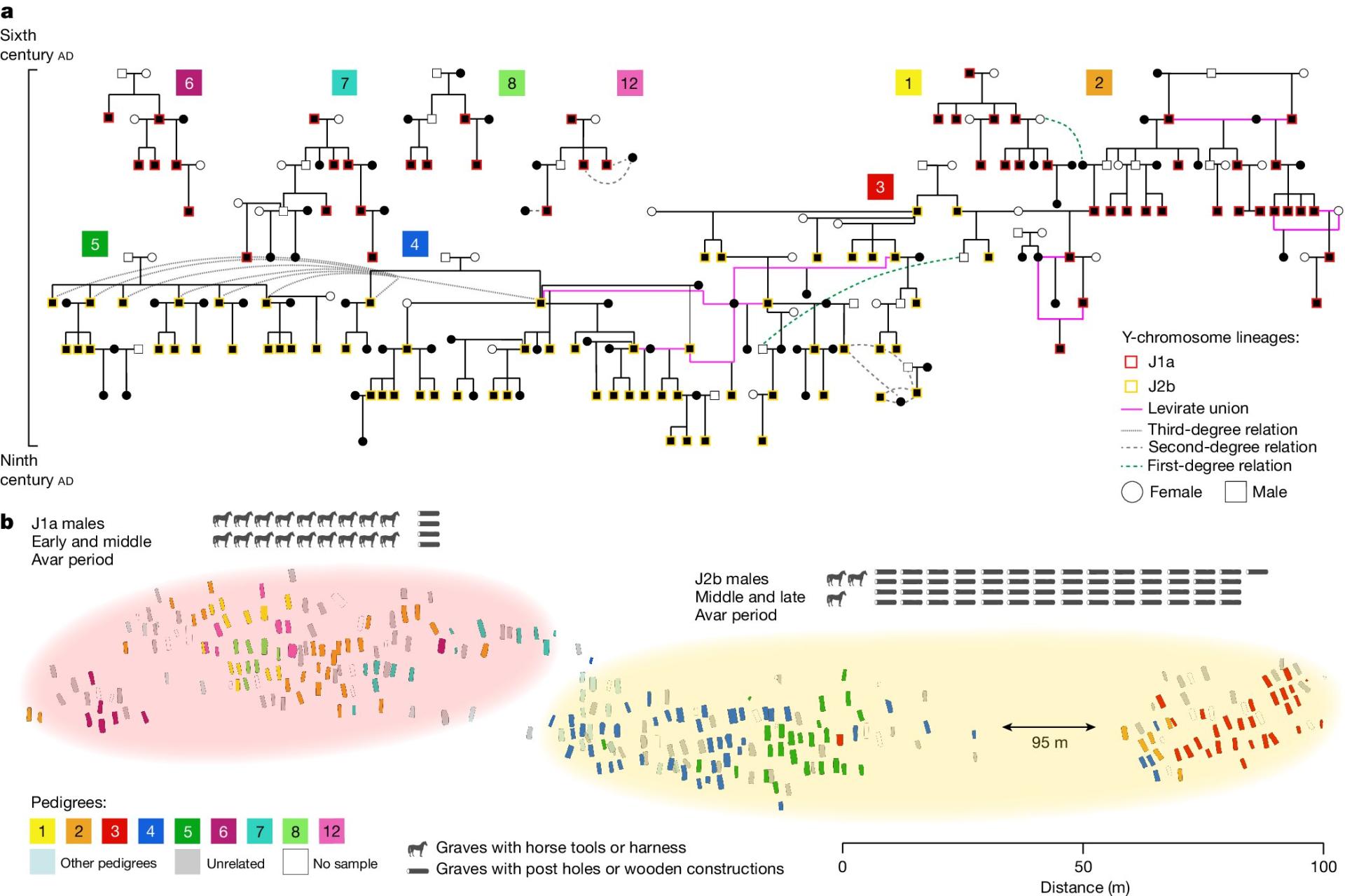Bob Yirka , Phys.org
Source - DNA study of Avar cemetery remains reveals network of large pedigrees and social practices (phys.org)
 The largest set of interconnected pedigrees reconstructed in RK and the cemetery map highlighting the burial location of related individuals. Credit: Nature (2024). DOI: 10.1038/s41586-024-07312-4
The largest set of interconnected pedigrees reconstructed in RK and the cemetery map highlighting the burial location of related individuals. Credit: Nature (2024). DOI: 10.1038/s41586-024-07312-4
An international team of archaeologists and archaeogenetics specialists, working with the Hungarian National Museum, has discovered a network of Avar pedigrees and community social practices after conducting a DNA study of the remains of people who once lived in what is now a part of Hungary.
In their paper published in the journal Nature, the group describes how they used genetic sequencing and special software to learn more about Avar society and their reproductive practices. Lara Cassidy, with Trinity College Dublin has published a News and Views piece in the same journal issue, outlining the work done by the team on this new effort.
Prior research has shown that a society known as the Avar once lived in what is now the Carpathian Basin, beginning in the mid-sixth century. Not much is known about them, however, because they did not leave behind any written documentation. What is known is that they began their existence as a nomadic people, and then sometime during the seventh century, they began to build settlements.
As part of such settlements, they also began burying their dead in cemeteries. Over the past several years, the remains of the people in several of them have been unearthed. The team involved in this new research studied the skeletons using both genetic and software tools to learn more about their kinship lineages.
In their work, the team studied the genes of 424 skeletons found in four cemeteries and discovered that 298 of them were biologically related. They also used special software called yHaplo, to determine the degree of relatedness of the remains. This allowed them to find patterns that revealed most people of the time were buried near relatives along a male-centered line. Also, males in the society tended to stay in their village. To prevent inbreeding, women left their villages to partner with men in other villages. The researchers also found that some partners were buried together.
The research team also found evidence that it was common for women to have children with more than one member of the same family; a father and son, for example, or with two or more brothers. Such findings, they note, suggest that the Avar had similar reproductive practices as other early Eurasian steppe people.
More information: Guido Alberto Gnecchi-Ruscone et al, Network of large pedigrees reveals social practices of Avar communities, Nature (2024). DOI: 10.1038/s41586-024-07312-4
Lara M. Cassidy, Ancient DNA traces family lines and political shifts in the Avar empire, Nature (2024). www.nature.com/articles/d41586-024-01020-9